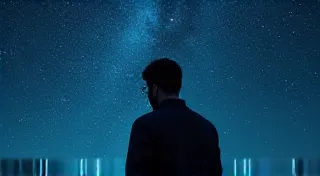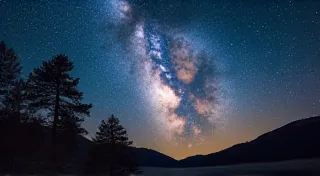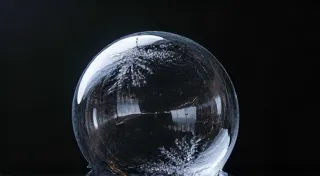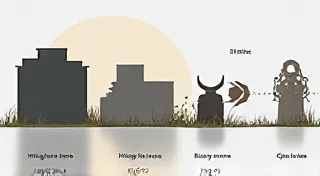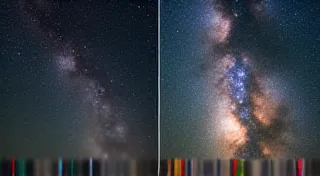Astrophotography Safety: Protecting Yourself Under the Night Sky
Astrophotography is an incredibly rewarding hobby, allowing you to capture the beauty and wonder of the night sky. However, venturing out under the darkness also presents unique safety challenges. Beyond the technical aspects of equipment and techniques, it's crucial to prioritize your well-being and awareness of your surroundings. This article will cover vital safety considerations for astrophotographers, focusing on wildlife, weather, and location safety. Before you head out, you might want to review what equipment is best to start your astrophotography journey – consider reading about choosing your first astrophotography camera to ensure you’re properly equipped.
Wildlife Encounters
Many prime astrophotography locations are in rural areas, often teeming with wildlife. It’s vital to be aware and respectful of the creatures you might encounter. Here’s how to minimize risk:
- Be Aware of Your Surroundings: Constantly scan your environment. Listen for sounds of animals. Look for tracks or signs of their presence. Don’t get so engrossed in your photography that you lose situational awareness. Pay attention to the overall feel of the environment; unusual silence can sometimes be a warning sign.
- Store Food Properly: Scent is a powerful attractant for animals. Secure all food in airtight containers or bear-resistant canisters (where required). Never leave food out in the open. Consider the types of animals that frequent the area. For instance, in coastal locations, raccoons and gulls are notorious for scavenging.
- Make Noise: While silence is essential for capturing faint light, making some noise (talking, humming) can alert animals to your presence, allowing them to move away. This is particularly important in areas known for larger animals. A simple whistle can also be effective and doesn’t require conversation.
- Carry Bear Spray (if applicable): In bear country, carrying bear spray and knowing how to use it is a critical safety measure. Practice deploying it *before* you need it. Familiarize yourself with the specific bear safety protocols for the region you're visiting.
- Keep a Safe Distance: Never approach or attempt to interact with wildlife. Observe from a respectful distance, using a telephoto lens if necessary. Remember that even seemingly docile animals can become defensive if they feel threatened.
- Know Local Regulations: Be aware of any local laws or regulations concerning wildlife encounters. These might include restrictions on feeding animals or guidelines for handling encounters.
Understanding how light impacts wildlife is also crucial. Bright lights can disorient nocturnal animals, disrupting their natural behaviors. Be mindful of your light sources and minimize their impact on the surrounding environment. Sometimes, the mesmerizing patterns of fractured light can be tempting to observe, but always prioritize wildlife safety and be aware of your surroundings.
Weather Preparedness
Weather conditions can change rapidly, especially in remote astrophotography locations. Being prepared for the elements is paramount for your safety and comfort. Even a seemingly clear forecast can quickly deteriorate, so always pack for the worst-case scenario. Understanding how atmospheric conditions affect image quality is key, but prioritizing your personal safety should always be first. While learning to interpret “fractured light” can be fascinating, make sure you are safe and warm while observing! Remember, sharing your stunning results online is always better when you're safe and comfortable – consider learning about sharing your astrophotography to build a portfolio and online presence.
- Check the Forecast: Thoroughly research the weather forecast for your chosen location. Pay close attention to temperature, precipitation, wind speed, and visibility. Utilize multiple weather sources and check for microclimate variations, particularly in mountainous terrain.
- Dress in Layers: Temperatures can drop significantly at night, even in warmer climates. Dress in multiple layers of clothing that you can adjust as needed. Consider moisture-wicking base layers to stay dry and comfortable.
- Protect Yourself from Windchill: Windchill can make temperatures feel much colder than the actual temperature. A windproof outer layer is essential. A good quality down or synthetic insulated jacket can provide excellent warmth in cold conditions.
- Be Aware of Hypothermia: Learn the signs of hypothermia and take steps to prevent it. Shivering, confusion, and drowsiness are early warning signs. Seek shelter and warm up immediately if you suspect hypothermia.
- Flash Flood Potential: Be mindful of the potential for flash floods, especially in desert or mountainous regions. Avoid setting up near washes or dry riverbeds.
- Lightning Safety: If thunderstorms are forecast, postpone your astrophotography session. Lightning is a serious threat. Seek shelter in a hard-topped vehicle or building. Avoid being the tallest object in the area.
Beyond temperature and precipitation, consider factors like humidity, which can affect lens fogging and image quality. A lens warmer can help mitigate this issue. Also, be aware of the potential for sudden changes in visibility due to fog or cloud cover. For those interested in capturing details of planets, be mindful of the influence weather has on image quality - resources on planet imaging can provide useful insights.
Location Safety
Choosing a safe location is the first step in preventing accidents. Here's what to consider:
- Tell Someone Your Plans: Always inform someone of your location and expected return time. Check in with them when you arrive and when you leave. Provide them with a detailed route and any relevant information about the area.
- Choose Well-Traveled Areas (when possible): While remote locations offer dark skies, they can also pose safety risks. Consider choosing locations that are relatively accessible and have some level of human presence. However, even seemingly populated areas can become isolated at night.
- Be Aware of Terrain: Uneven terrain, steep slopes, and loose rocks can lead to falls. Wear appropriate footwear and be cautious of your footing. A sturdy pair of hiking boots with ankle support is recommended.
- Carry a First-Aid Kit: A well-stocked first-aid kit is essential for treating minor injuries. Include items like bandages, antiseptic wipes, pain relievers, and blister treatment.
- Bring a Light Source: A reliable flashlight or headlamp is crucial for navigating in the dark. Choose a light source with adjustable brightness and a long battery life.
- Learn Basic Navigation: Familiarize yourself with basic navigation techniques, such as using a map and compass. GPS devices are helpful, but batteries can fail. Practice using a map and compass before you head out.
- Be Respectful of Private Property: Always obtain permission before entering private property. Respect landowners and their property.
- Minimize Light Pollution: While you’re seeking dark skies, be mindful of your own light output. Use red lights whenever possible, as they are less disruptive to night vision and wildlife.
Consider carrying a personal locator beacon (PLB) or satellite messenger, especially if you’re venturing into truly remote areas where cell service is unreliable. These devices can provide a vital link to emergency services in the event of an accident. After a successful astrophotography session, consider taking the time to learn how to process those images to maximize the details revealed – the process of stacking astrophotography images can drastically improve signal-to-noise ratio, allowing you to reveal stunning details.
By prioritizing safety and being prepared for potential hazards, you can enjoy the incredible experience of astrophotography while minimizing risks. Stay safe and happy shooting!
